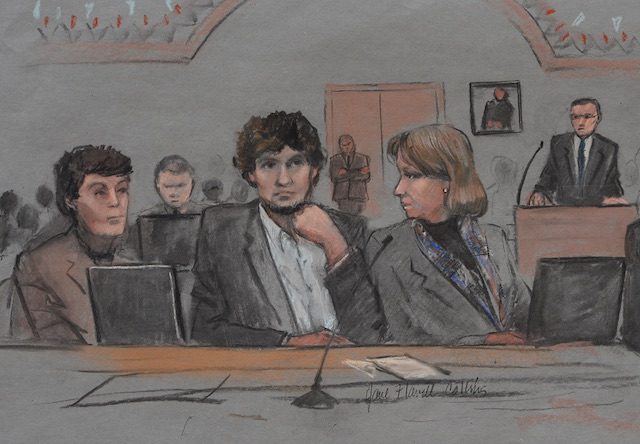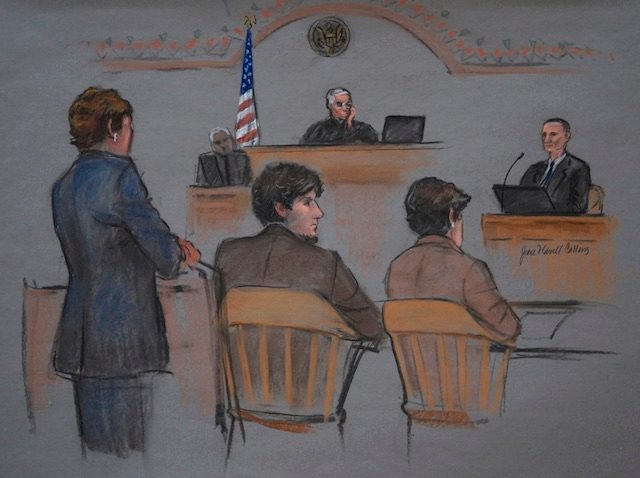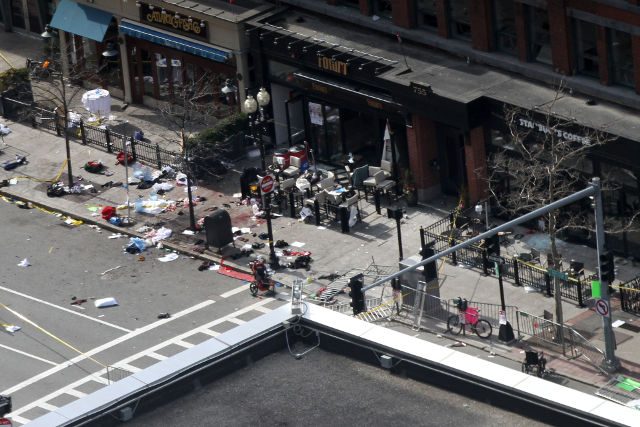SUMMARY
This is AI generated summarization, which may have errors. For context, always refer to the full article.

BOSTON, USA – Jury deliberations get underway on Tuesday, April 7, in the trial of Boston bomber Dzhokhar Tsarnaev, the 21-year-old American of Chechen descent accused of carrying out the deadly 2013 attacks.
Three people were killed and 264 others wounded in the twin blasts at the city’s marathon, the worst attack in the United States since the September 11, 2001 attacks on New York, Washington and Pennsylvania.
Government prosecutors portrayed the Muslim immigrant, who became a US citizen in 2012, as a callous terrorist who carried out the bombings to bring holy war to the northeastern US city and punish America.
Tsarnaev’s defense attorneys admit that he took part in the attack, but have sought to portray him during the trial as a helpless accomplice, bullied or manipulated into participation by his more radical elder brother.
The jury must decide whether Tsarnaev is guilty on 30 counts related to the April 15, 2013 attacks, and the subsequent murder of a police officer, a car jacking and a shootout with police while on the run.
Seventeen of those charges carry the possibility of the death penalty under federal law.
Judge George O’Toole instructed the jury as to the law and evidence, and dismissed 6 alternates, leaving 12 men and women who will decide the case.
“With that jurors we ask you now to withdraw to deliberate upon the evidence and return with your verdict,” he said, Monday, April 6.
But with just minutes to go until the end of the working day, he ordered them to return at 9 am local time (1300 GMT) on Tuesday to begin deliberations.
‘Cold, calculated terrorist act’

If Tsarnaev is convicted, the trial will enter a second stage, when the jury determines whether he should be executed or spend the rest of his life behind bars without parole – the only sentencing options available.
Prosecutors spent 4 weeks building their case, calling 92 witnesses in an effort to paint Tsarnaev as an active and willing bomber alongside his elder brother, who was killed while on the run.
“He wanted to terrorize this country. He wanted to punish America for what it was doing to his people,” assistant US attorney Aloke Chakravarty told the court in an emotional closing statement on Monday.
“That day they felt they were soldiers, that they were mujahideen and they were bringing their battle to Boston,” added Chakravarty.
They portrayed a cold, callous killer – a marijuana-smoking, laid-back student who had recently failed a number of exams and become an avid reader of the Islamist literature that investigators found on his computer.
Chakravarty showed the jury photographs and video clips, filling the court with the screams of victims, as the camera closed in on blood on the ground, the panic, fear and chaos after the April 15, 2013 attacks.
“This was a cold, calculated terrorist act. It was intentional. It was bloodthirsty.”
Prosecutors say Tsarnaev carried out the attacks to avenge the deaths of fellow Muslims overseas after learning how to build pressure-cooker bombs through Al-Qaeda English-language magazine “Inspire.”
Eight-year-old Martin Richard, Krystle Campbell, 29, and Lingzi Lu, 23, were killed in the bombings.
Jurors were shown photographs of Tsarnaev casually buying milk just minutes after the bombings, then laughing and joking with friends.
‘He did what terrorists do’

Chakravarty read aloud from a message he left in a boat in a suburban garden, the hideout where the defendant was eventually arrested, criticizing the US government over the wars in Iraq and Afghanistan.
Defense lawyer Judy Clarke, who has saved some of America’s most notorious convicts from the death penalty, said Tsarnaev deserved to be condemned but that the attacks would never have happened without Tamerlan.
Her team portrayed the older brother – who was killed by police while on the run – as the architect of the bombings, arguing that his younger sibling had fallen helplessly under his strict and controlling influence.
Tamerlan built the bombs, murdered police officer Sean Collier, downloaded the bomb-making instructions, brought the bomb materials, the backpacks and his fingerprints were all over the evidence, Clarke said.
“Let’s be honest about what the evidence actually shows. We’re not asking you to excuse the conduct, but let’s look at the varying roles,” Clarke said.
“He was an adolescent drawn into the passion and belief of his older brother and still living a teenage life,” she said.
Tsarnaev, she said, deserved to be condemned, but she asked jurors to keep their minds open for the next stage of trial. – Jennie Matthew, AFP / Rappler.com
Add a comment
How does this make you feel?
There are no comments yet. Add your comment to start the conversation.